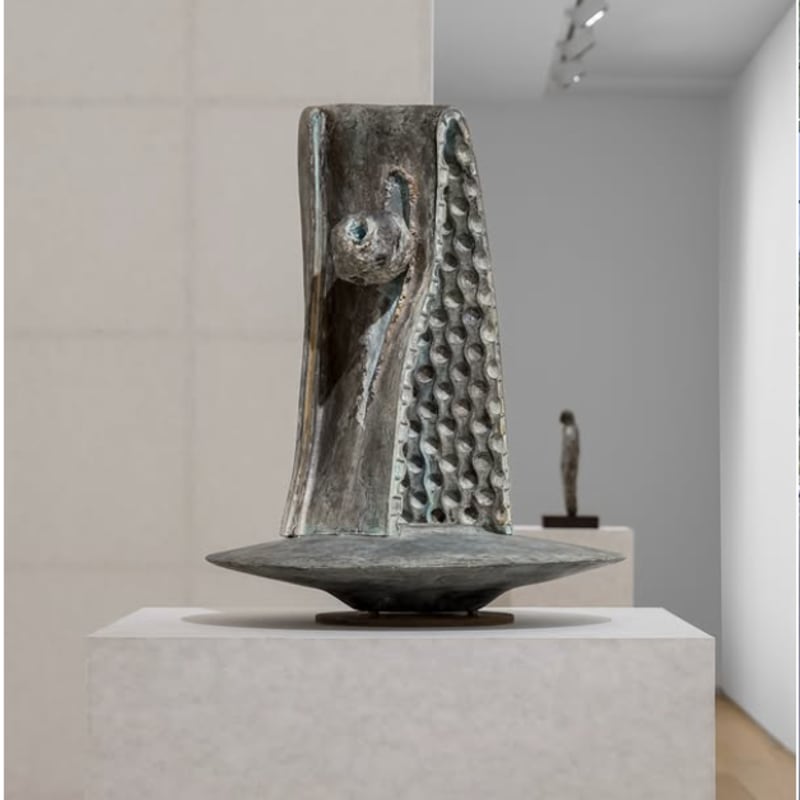Overview
Traps are defining elements in the art of Andreas Slominski, both in a figurative and a literal sense. His new works include a series of motifs drawn from historical greeting and playing cards, which the artist edits, enlarges and transfers to poster sheets produced by the German company Begeisternder Wahlkampf (‘Captivating Campaign’). Originally intended for exaggerated or even lurid political messages, the election poster is repurposed using sentimental images that invite the viewer to discover hidden poetry in the mundane.
Slominski started working on the reproduction of postcard motifs onto larger formats as early as the mid-1990s, but was never quite satisfied with the print result. The latest developments in the field of printing technology, which allow for a much higher quality, prompted the artist to revisit the subject of postcards for his new series of works. Elevated to the sphere of fine art, Slominski reconfigures a medium of communication originally intended for temporary use. Protected behind glass, the artist elevates the value of the posters and also creates a barrier between them and the viewer.
The motifs taken from the postcards show Dutch genre scenes or nostalgic interiors, with people depicted in traditional costumes performing everyday activities. Besides being a medium of communication, picture-postcards showing country-specific illustrations were popular collectors’ items at the beginning of the 20th century. The cards offered a stereotypical representation of individual countries or cultures and enabled collectors to structure and categorise the world. The motifs for Slominski’s works were taken from the Altona Museum’s postcard archive, as well as the artist's own collection. As in a scrapbook, Slominski assembles the found objects like a jigsaw puzzle, forming a supposedly comprehensive portrayal of reality.
Traps are defining elements in the art of Andreas Slominski, both in a figurative and a literal sense. His new works include a series of motifs drawn from historical greeting and playing cards, which the artist edits, enlarges and transfers to poster sheets produced by the German company Begeisternder Wahlkampf (‘Captivating Campaign’). Originally intended for exaggerated or even lurid political messages, the election poster is repurposed using sentimental images that invite the viewer to discover hidden poetry in the mundane.
Slominski started working on the reproduction of postcard motifs onto larger formats as early as the mid-1990s, but was never quite satisfied with the print result. The latest developments in the field of printing technology, which allow for a much higher quality, prompted the artist to revisit the subject of postcards for his new series of works. Elevated to the sphere of fine art, Slominski reconfigures a medium of communication originally intended for temporary use. Protected behind glass, the artist elevates the value of the posters and also creates a barrier between them and the viewer.
The motifs taken from the postcards show Dutch genre scenes or nostalgic interiors, with people depicted in traditional costumes performing everyday activities. Besides being a medium of communication, picture-postcards showing country-specific illustrations were popular collectors’ items at the beginning of the 20th century. The cards offered a stereotypical representation of individual countries or cultures and enabled collectors to structure and categorise the world. The motifs for Slominski’s works were taken from the Altona Museum’s postcard archive, as well as the artist's own collection. As in a scrapbook, Slominski assembles the found objects like a jigsaw puzzle, forming a supposedly comprehensive portrayal of reality.
The distinction between the familiar and the foreign in the Dutch motifs is not clearly definable for the artist, who was born in Meppen in Lower Saxony – a town located near the Dutch-German border. Positioned somewhere between these polarities, Slominski creates remarkable and almost irritating works of art that, by trivialising the Dutch way of life, seem both homely and outlandish at the same time. Scenes of rural and, at first glance, idyllic existences allow for various associations. Upon closer inspection, these sometimes cliché depictions reveal a sentimental view of the past.
All of Slominski’s works can be seen as ‘traps’ in a figurative sense and, accordingly, there is a devious element in his depiction of reversed playing cards. The artist plays a game of hide-and-seek with the viewer, from whom the actual content of the cards remains hidden. In iconographic terms, the depiction of playing cards often serves as a warning against the temptations of gambling, which can lead to quarrels, financial ruin or even murder. Navigating between wit and deadly seriousness, the exhibition shows an orderly representation of the world created by Slominski that challenges viewers to redefine themselves within it.
Slominski attended the Hochschule für Bildende Künste in Hamburg, and now lives and works between Hamburg and Werder. His solo museum exhibitions include the Hamburger Kunsthalle, Hamburg (1995 and 1997); Deutsche Guggenheim, Berlin (1999); Serpentine Galleries, London (2005); Museum für Moderne Kunst, Frankfurt (2006); Museum Bojimans Van Beuningen, Rotterdam (2007); Neuer Berliner Kunstverein, Berlin (2013 and 2014); Deichtorhallen Hamburg (2016); and Museum Jorn, Silkeborg, Denmark (2017).



















































































































































































